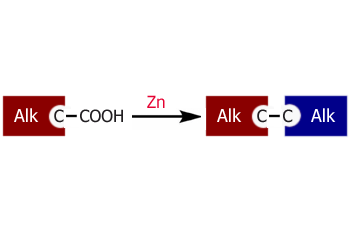A general alkyl-alkyl cross-coupling enabled by redox-active esters and alkylzinc reagents
Activated esters of alkylic acids as building blocks for the formation of sp3-sp3 bonds.
Looking backwards it is amazing how our understanding of organometallic couplings has improved in the last 30 years. When I was doing my PhD, we were quite limited in the reactions we had available and the substrates we could use for them. Just as example, the synthesis of boronic acids was still considered a really tricky thing… But look now: reactions that them were considered difficult or plainly imposible (for example, a general coupling reaction to prepare amines by formation of C-N bonds) are now common.
This recent work by Baran et al. (Scripps, CA, USA) is an excellent example. In the last decade Baran has developed some quite interesting synthetic methods on the field of organometallic chemistry (see some examples in this blog). Their previous works about the formation of (sp3)–C(sp2) bonds using a Ni-catalyzed decarboxylative cross-coupling of alkyl carboxylic acids with arylzinc reagents, has been extended to prepare the more challenging C(sp3)–C(sp3) bonds. As they state in the paper, this is a reaction with plenty of pitfalls: b-hydride elimination, dimerization, reduction and others. But after a lot of experiments, they found that the formation of the desired alkyl-alkyl product can be done by preparing a redox-active ester and then using an alkyl Zinc reagent in the presence of NiCl2·glyme and a ligand in THF/DMF at 25 °C. The results on a model substrate range from good to excellent and the scope of the reaction looks impressive: in more than 60 examples, covering common aliphatic esters, heterocyclic esters and broad range of functional group, the reaction yields products with good yields. Even on solid phase. So another option available if you are aiming for a C(sp3)–C(sp3) coupling.
Science 2016, 352(6287), pp 801-805.
See: 10.1126/science.aaf6123


